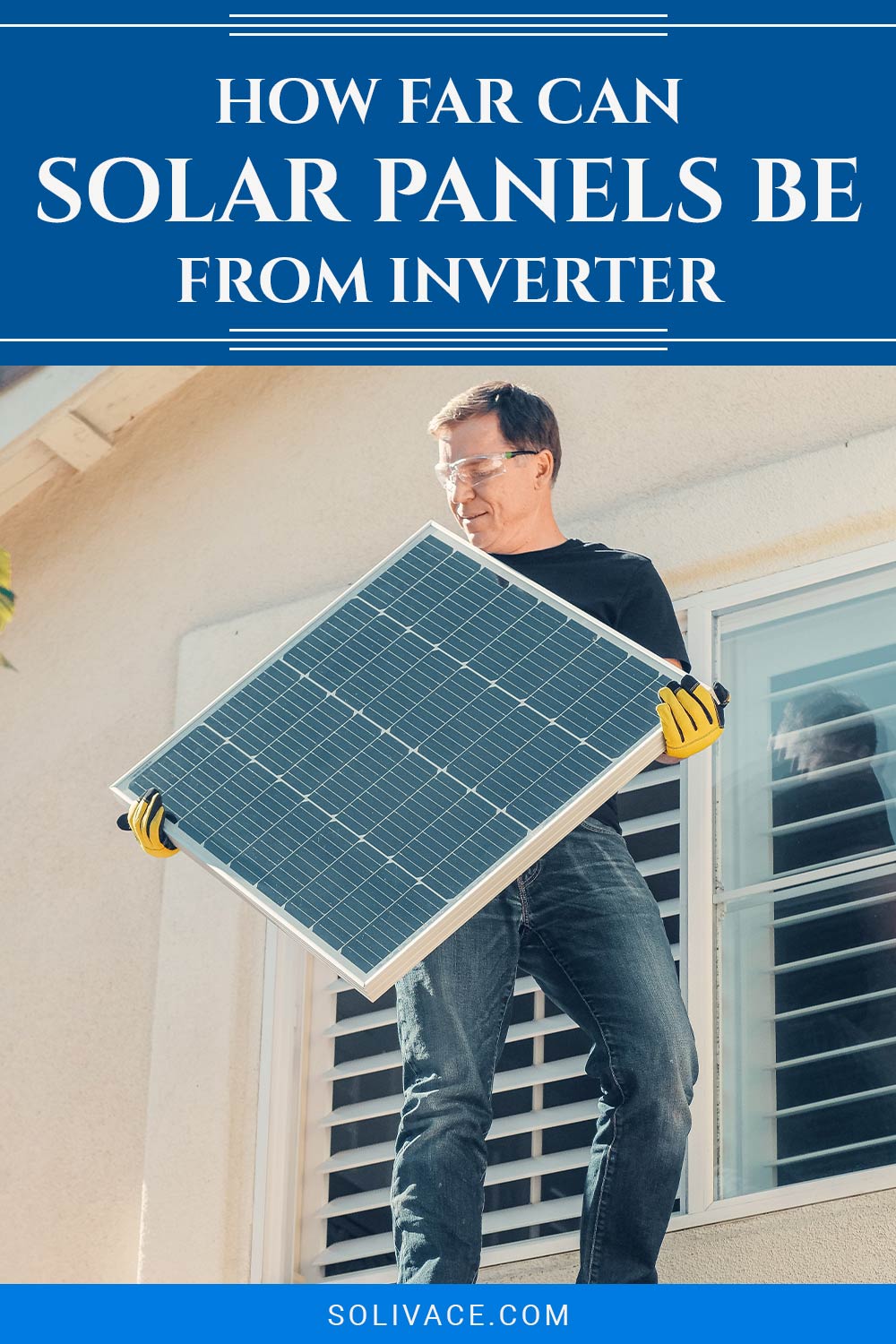How Far Can Solar Panels Be From Inverter
We may earn commissions for purchases made through links on our site. Learn more on our about us page.
Although the photovoltaic cells of solar panels generate electricity as a direct current, energy can still be lost if it has to travel over long distances.
Reducing or preventing this loss will ensure that your energy bills are as low as possible, thanks to being supplemented by solar energy.
While it is possible for solar panels to be installed up to 500 feet from your house and, therefore, the inverter, it isn’t practical. Fifty feet or less is typically recommended to keep energy losses low.
Keep reading to learn more about why solar panels can only be so far away from an inverter, other factors affecting this distance, and more.

How Far Can Solar Panels Be From Inverter?
Ideally, solar panels should be as close to the inverter and charge controller as possible. In situations where the panels are roof-mounted, this typically translates to anywhere between 20 and 50 feet from a group of panels to the inverter.
When it isn’t possible to roof solar mount panels, and with excessive shade conditions close by, solar panels can be installed on the ground at, theoretically, any distance from the inverter.
The problem with installing the inverter and panels so far apart is that it becomes very costly, and the energy loss can reach unacceptable levels. This is why it is suggested that 100 feet be the maximum distance between these two components of your solar system.
What Does it Depend on How Far Can Solar Panels be Away from Inverter?
Two main factors affect how far away solar panels can be away from an inverter:
- The thickness and insulation of your cabling
- How much are you willing to spend
To ensure that your solar panels are operating at maximum efficiency, shortening the distance between the panels and inverter helps to reduce the energy loss through resistance in the wires.
Putting a long distance between your solar panels and inverter means either increasing your energy loss to unacceptable levels or paying much more for your system installation.
For these long distances, thick cables with greater insulation help prevent excessive energy loss but cannot prevent it entirely.
In addition, these cables are much more expensive than the thinner cables that can be used when panels and inverters are within 20 to 50 feet of each other.
Do Climate Conditions Have an Influence on Distance Between Solar Panels and an Inverter?
Indirectly, climate conditions can significantly affect the distance between your solar panels and an inverter. The most prominent reason why is temperature.
Solar panels operate at a lower efficiency in areas with consistently high ambient air temperatures. This is because the heat increases the wires’ resistance, making it more difficult for voltages to travel any distance, especially long distances.
Having solar panels a long distance away from an inverter in these conditions is unacceptable because of the lower efficiency of the panels combined with the higher amounts of energy loss on the way to the inverter.
Why Is it Important to Know How Far Can Solar Panels be away From the Inverter?
Knowing how far away solar panels can be from inverters is important when designing a solar system for anyone.
If it isn’t possible to mount your solar panels on a roof, but you have landed nearby with plenty of sunlight, there are solutions you can use to install a solar system.
When a long distance between panels and inverters is inevitable, you can have a better idea of a solar system’s cost if you know the relationship between the distance and the cost. You may also be able to recognize if solar power is even a viable option for your household.
How Will You Know if Your Solar Panels are Too Far Away from the Inverter?
Several signs might indicate that your solar panels are installed too far away from the inverter. Assuming you know that your solar panels themselves are in working condition, you can:
- Check your solar inverter’s lights and error codes
- Monitor your solar meter
- Review your electric bill
Your inverter may have flashing lights that alert you to an error in the system that have an associated code and meaning. For example, an error code of 509 on a Fronius inverter indicates that no energy is getting into your solar grid.
This means that the energy being produced by your solar panels isn’t reaching the inverter or not enough is reaching the inverter to be used.
Monitoring your solar meter should be a quick way to know if the panels are too far away because you should see zero or close to zero kilowatt-hours.
If you’ve installed a solar system to help offset your electric bill and aren’t seeing any returns, it could indicate that your panels are too far away from your inverter, among many other things.
Final Thoughts on the Distance Between Solar Panels and Inverters
In a perfect world, solar panels could be placed any distance from inverters and work just fine. But unfortunately, the reality is that solar panels should be 20 to 50 feet from the inverter to reduce losses and improve the efficiency of the system as a whole.
If it just isn’t possible to meet that requirement for whatever reason, installing panels further away is still possible but quickly becomes expensive and much more work for less of a return.



Leave a Reply
You must be logged in to post a comment.